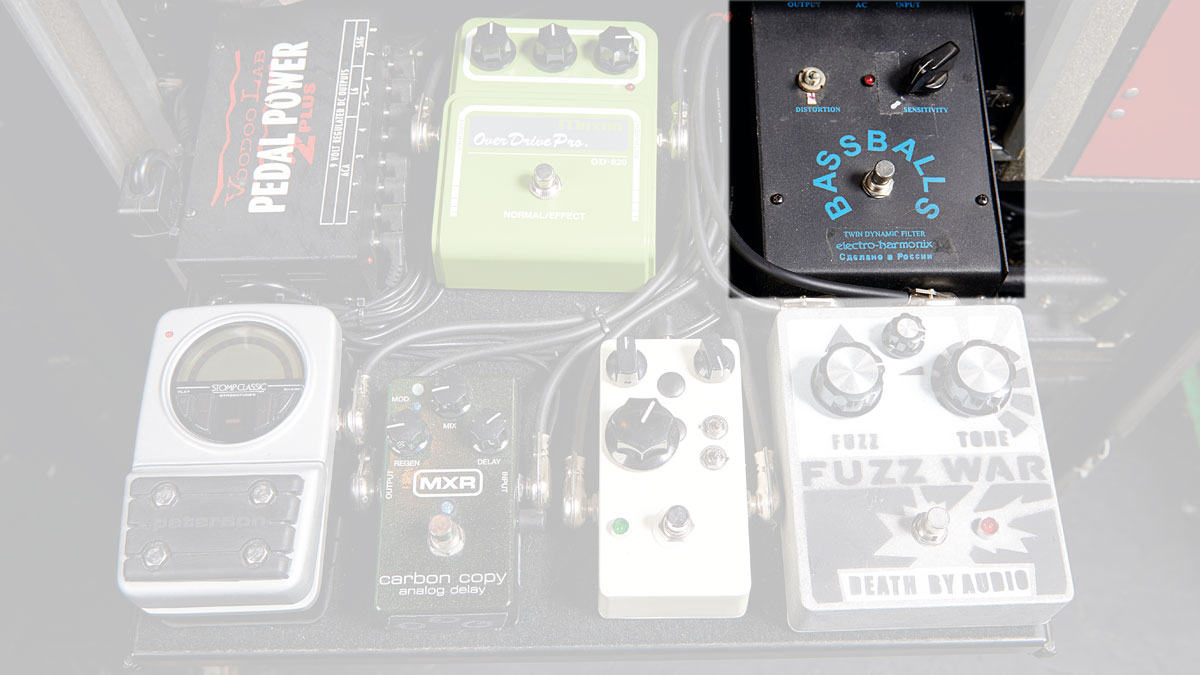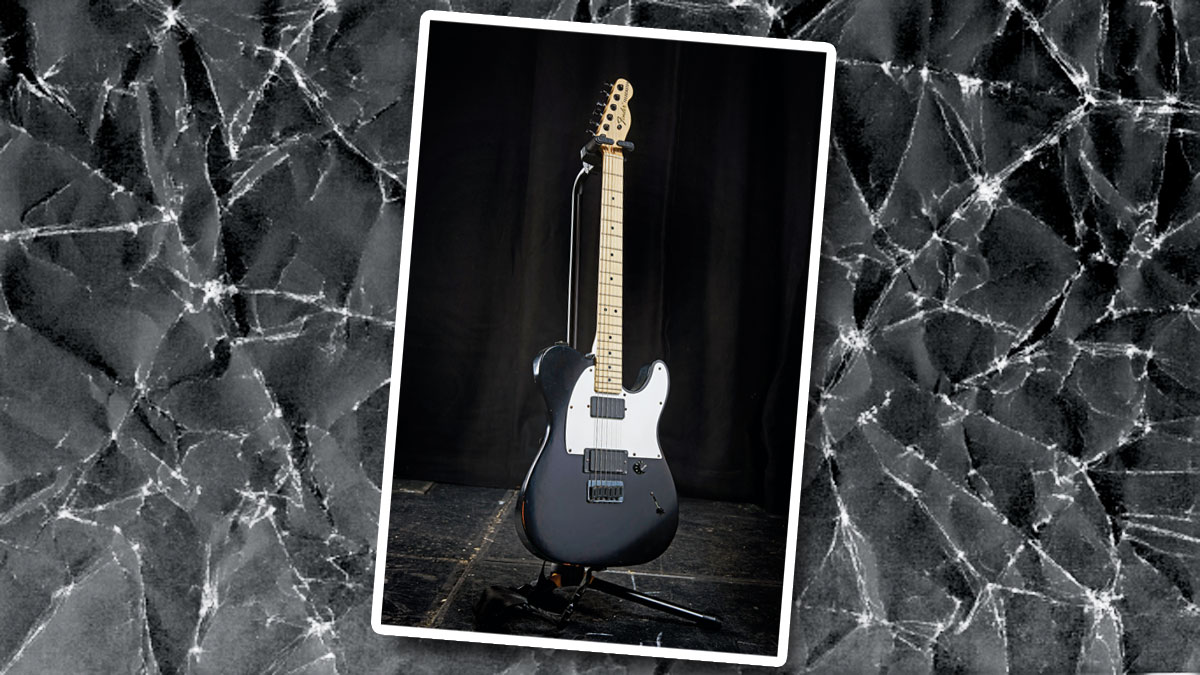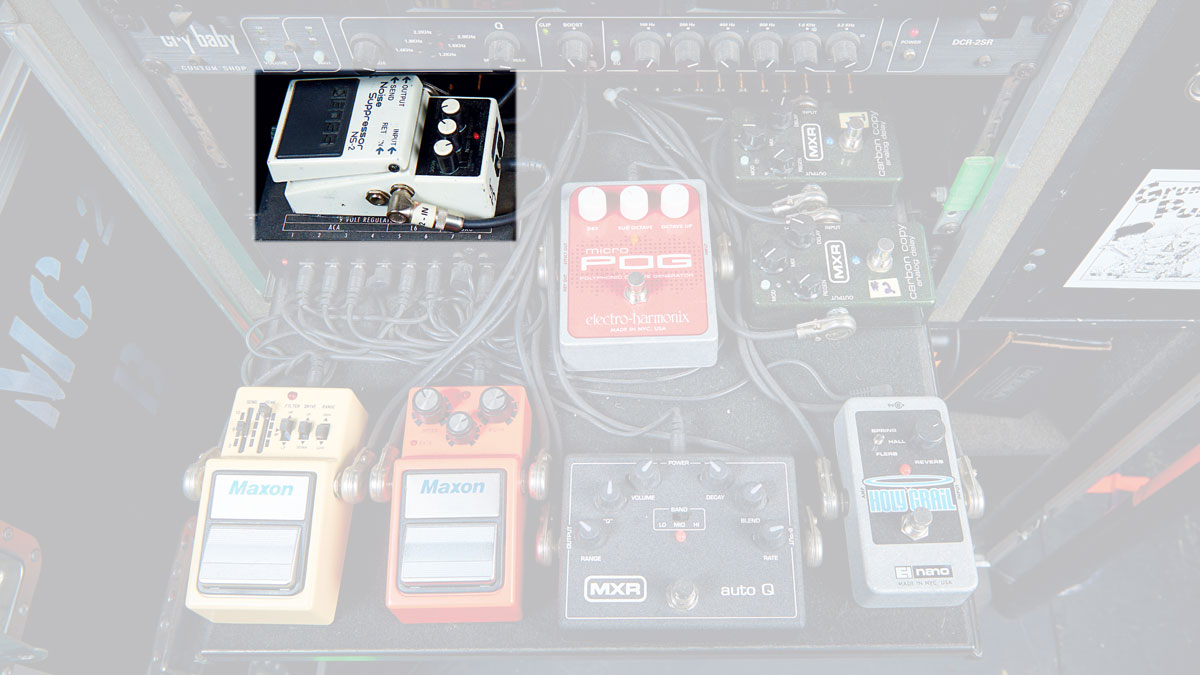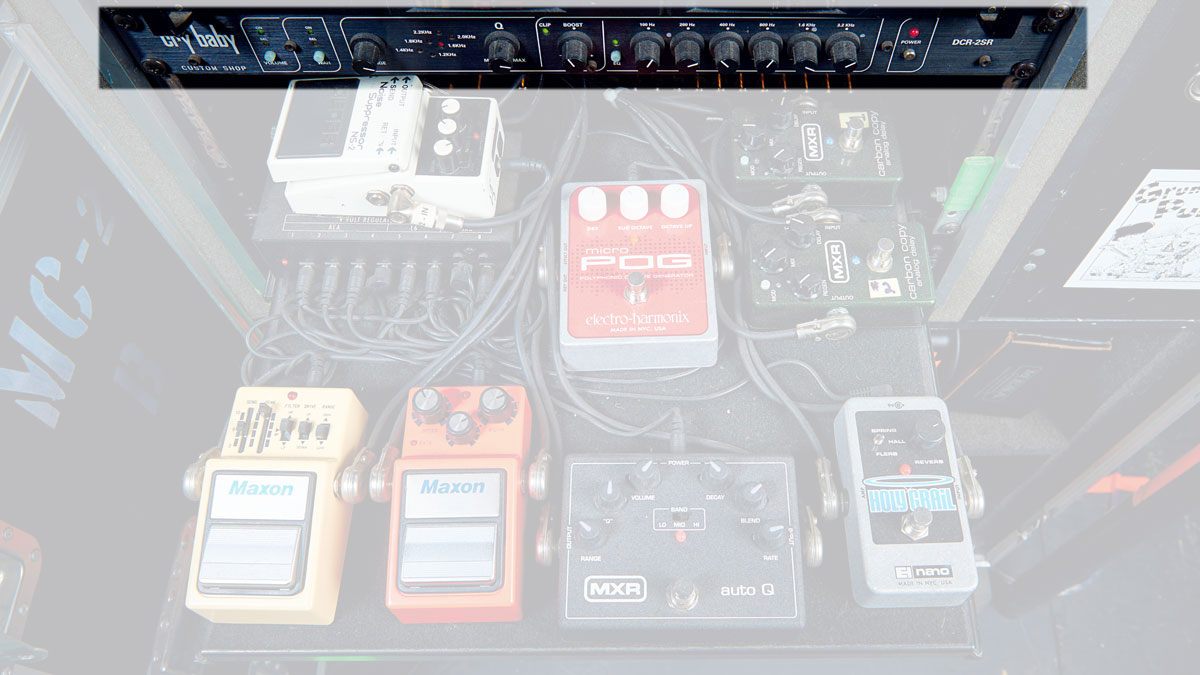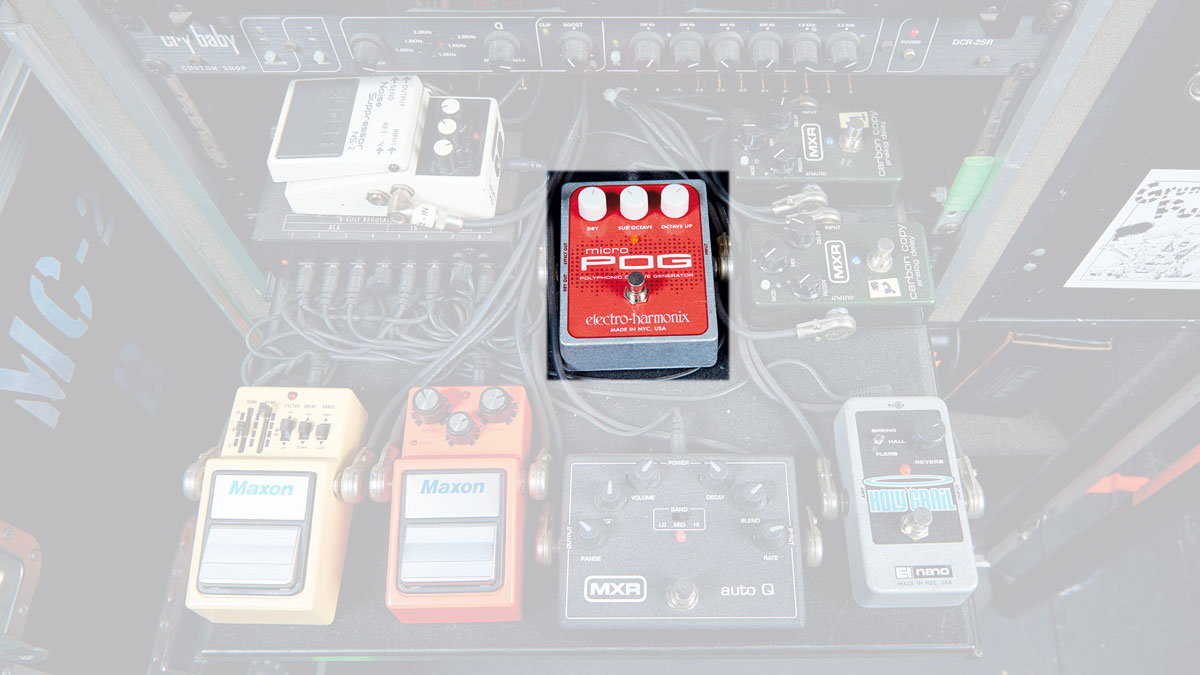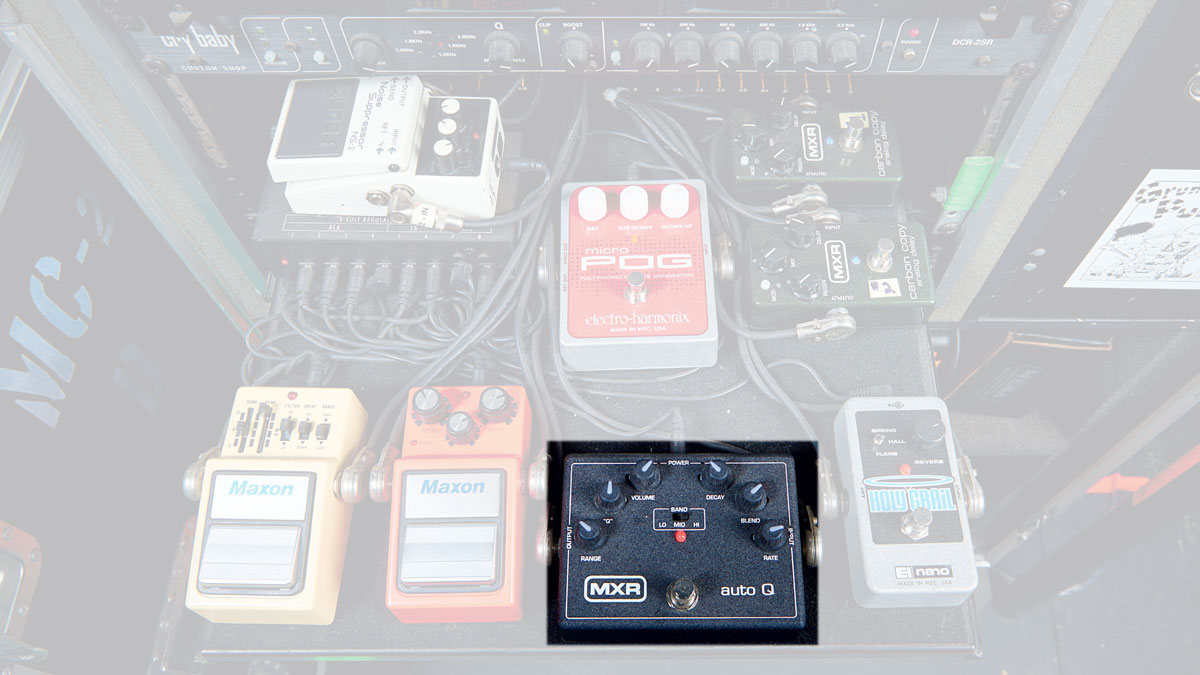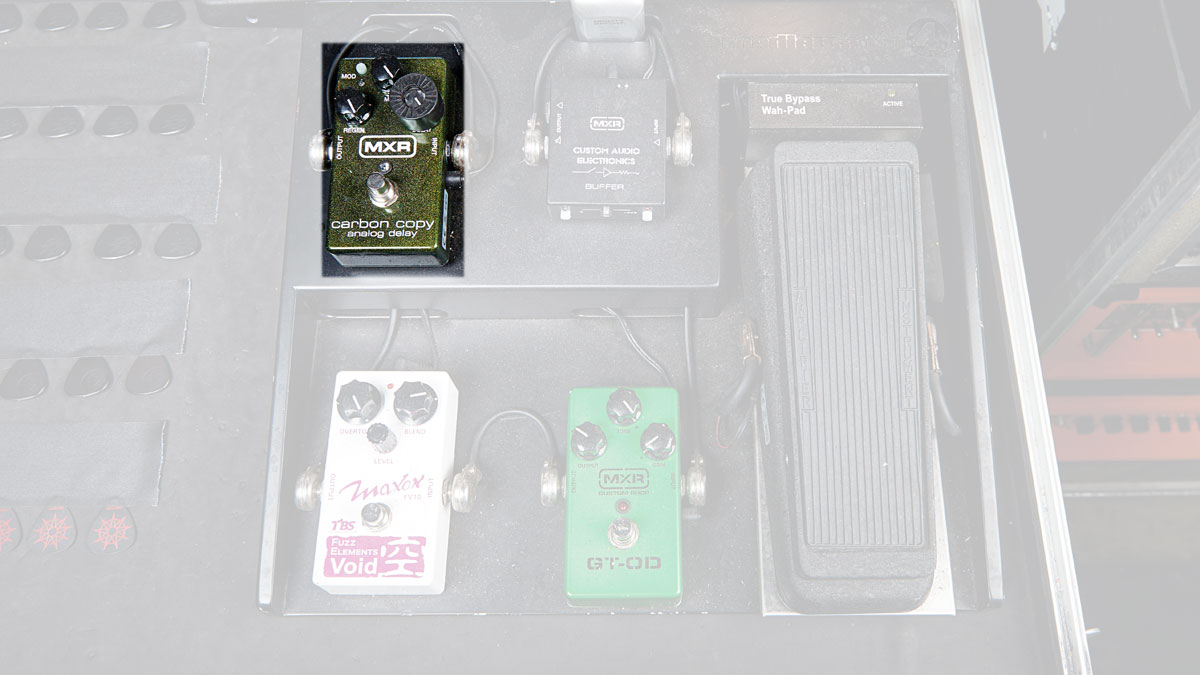Rig tour: Slipknot
Mick Thomson and Jim Root reveal their gear
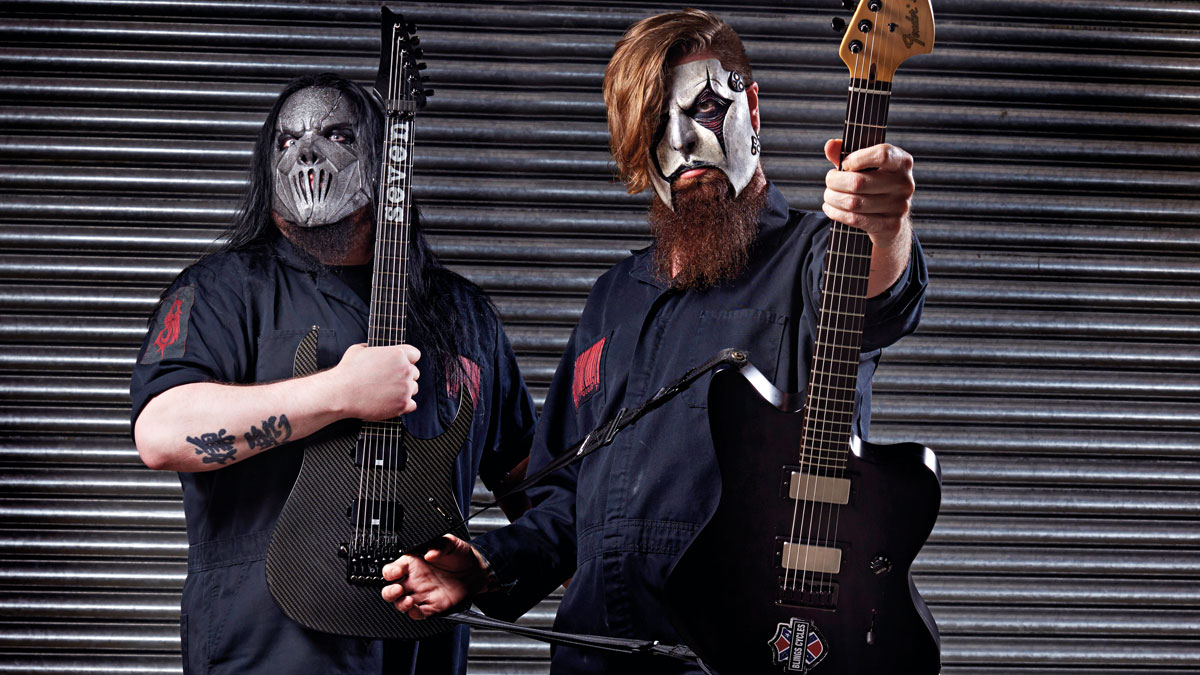
Introduction
As the nine-man juggernaut rolls into Cardiff for their final UK visit for a while, Mick Thomson and Jim Root show us the tone machines that tie the ’Knot together…
Their guitars need to hold their own in the orchestrated chaos of a nine-man metal phenomenon
As we peer into the gloom backstage at Cardiff Motorpoint Arena we’re not sure quite who’s out there, but then suddenly out of the black loom two hulking figures… who are not only welcoming and amiable, but are also more than happy to show us around their rigs!
Beneath the masks, Jim Root and Mick Thomson are two players who give just as much attention to their tone as their playing dynamic. Which is just as well, their guitars need to hold their own in the orchestrated chaos of a nine-man metal phenomenon.
Don't Miss
Slipknot's Jim Root: my top 5 tips for guitarists
Slipknot talk new album, Paul Gray and overhauling their tones
Metal roundtable: Slipknot vs Korn
Slipknot's Jay Weinberg on following Jordison, The Gray Chapter, that mask and more
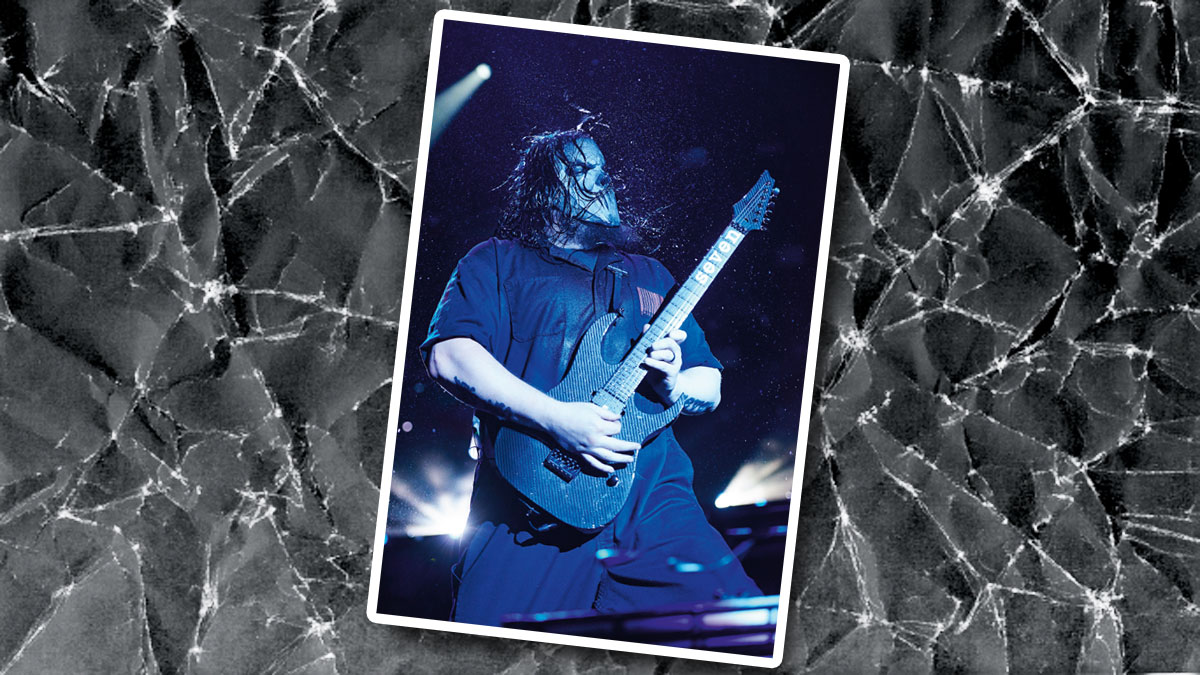
Ibanez M2M Mick Thomson Signatures
Mick Thomson: “We’ve got several tour rigs around the world right now and this is our B rig. So it’s a different collection of guitars on this rig.
“The only thing really different with the guitars is the colours. The construction is exactly the same; mahogany with a neck-through laminated maple neck. Three- or five-piece depending on what I felt like at the time I had it built.
It’s probably between my Carbon and my Stormtrooper that gets used the most during the set right now for total number of songs
“I run two of them in drop A, three of them in B. I’ve got a back up for my A just in case, but since the strings are like winch cables when I’m tuned down in A (gauge: 0.011-0.058 and 0.012-0.068 for B tuning) I’ve never broken one and had to go to a backup. But tonight I guess will be the night that I do! I just jinxed myself completely - tonight I will break two just to make up for lost time I’m sure!
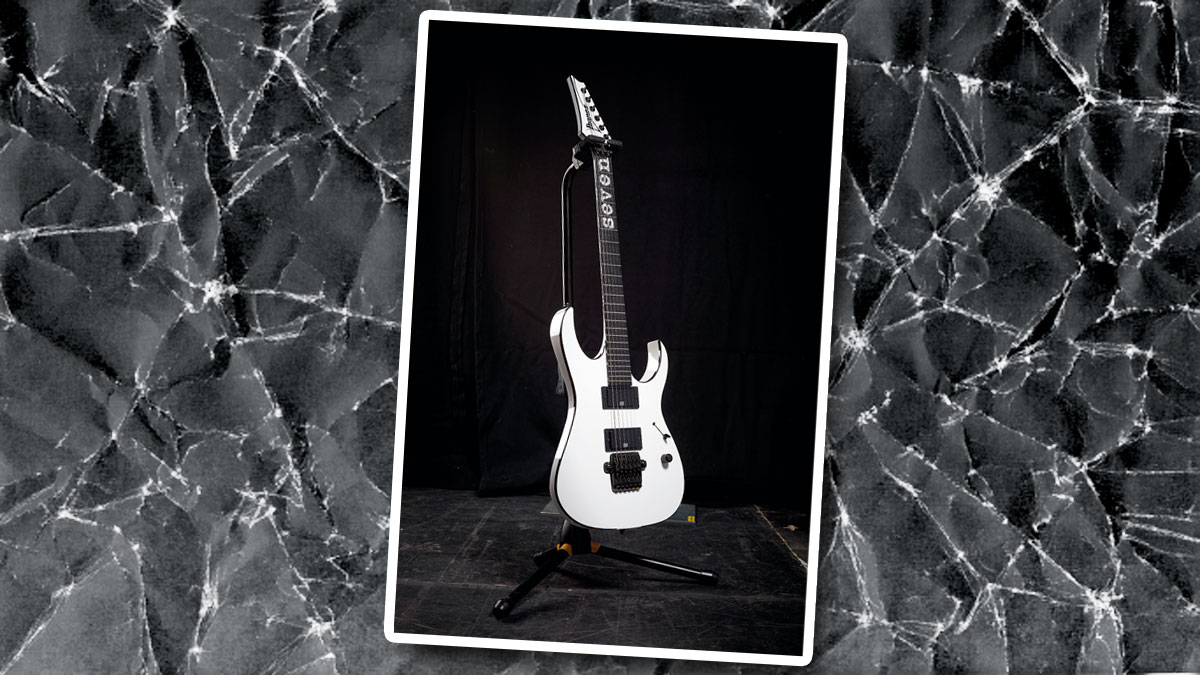
“It’s probably between my Carbon and my Stormtrooper [white, above] that gets used the most during the set right now for total number of songs. Every one of these guitars is made by hand by Tak [Hosono], who is the luthier in the artist shop for Ibanez. So I’ll have a neck spec that I use, my own thing that I have done, but there’s a little variation here and there.
“Some are thinner than others, some are a little rounder than others. But that’s just the human factor, because if a CNC router cut it they’d all be the same. Sometimes I like necks to be thinner and flatter if I want to play leads, and the ones that sound better for rhythm typically have a little bit of a fatter neck. They all have their niche that they sit in.”
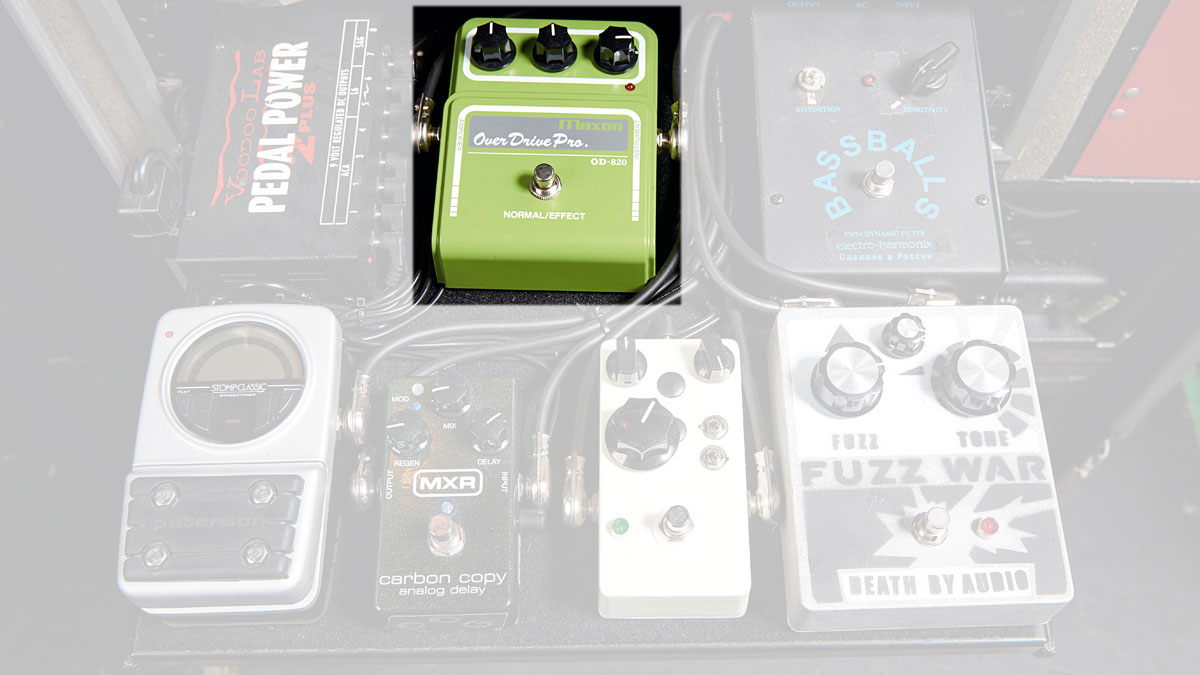
Maxon OD820
Mick: “I use it as a boost, just a little bit of boost. In the studio I use that pedal in front of an unmodded Marshall 800 from 1985/86 and I blended that in with my Rivera for tracking. I’d put that pedal in front of [the JCM800] and it really woke it up. It worked with that amp and it works well with these guys too.”
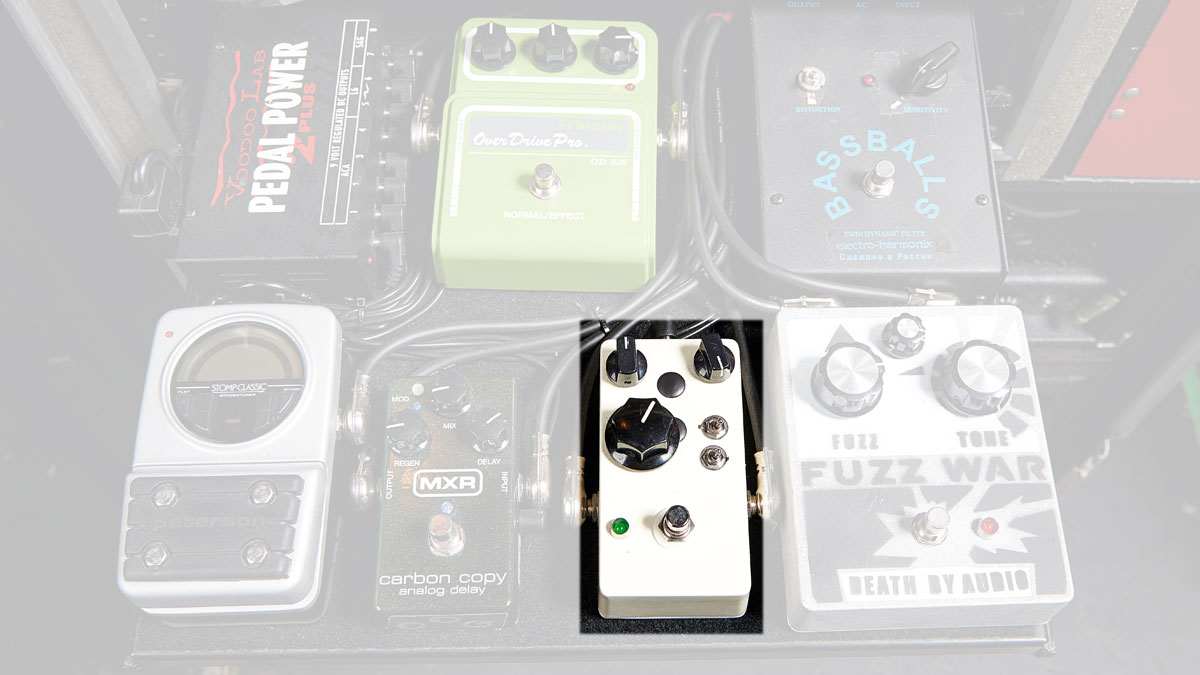
Kevin Allen Fuzz
Mick: “My guitar tech [Kevin Allen] made that; it’s his version of the octave fuzz I used for a long time. I use it at the beginning of Duality.”
Kevin: “It has a square wave filter on it so it sounds extra zippery and fucked up.”
Mick: “Fucked up was what we were going for.”
Kevin: “He wanted something more fucked up so… we fucked it up.”
Mick: “It’s so over the top we have to dial it back a little bit, but it’s a shit ton of fun and I can’t wait to be in the studio with it because I know it’s going to end up somewhere. It’s one of those things where it’s like, is that a guitar any more?!”
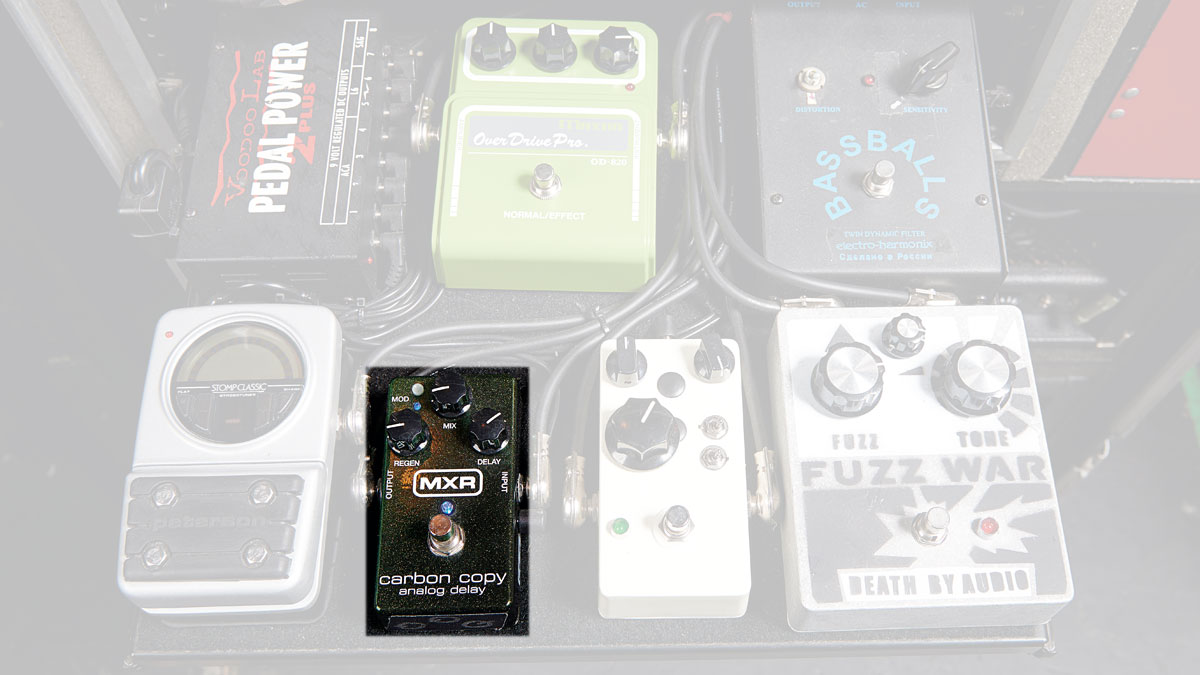
MXR Carbon Copy Delay
Mick: “There’s a million analogue delays but this is a good-sounding one. It’s used minimally in terms of our current setlist.
“[Kevin] will pop it on or off for certain things just to fatten a couple of things up. Probably the single-note stuff in Devil In I and things like that.”
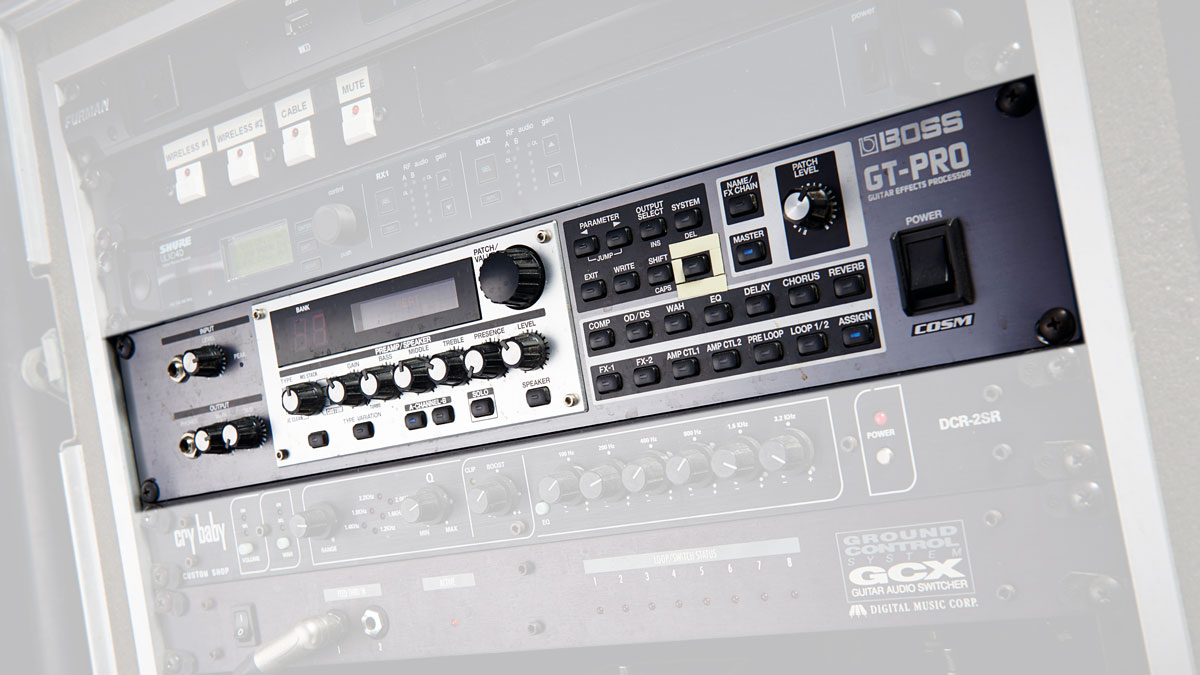
Boss GT Pro
Mick: “We’ve had Fractal working on patches so we could get the Boss GT PRO [modelled].
“I had a Boss GX700, an orangefaced thing, back when I did Surfacing on it, I did Spit It Out and Prosthetics… all these things very specific to that effects unit. And you can’t just mimic that shit with something else.
“I’ve been sort of a slave to that thing for a while, because my GX700s were falling apart. I kept buying them used whenever I could find them, but something would go here and there, the MIDI would stop switching or whatever, so I got one of these. I’d love to replace it and Fractal’s stuff sounds amazing, I love their effects.”
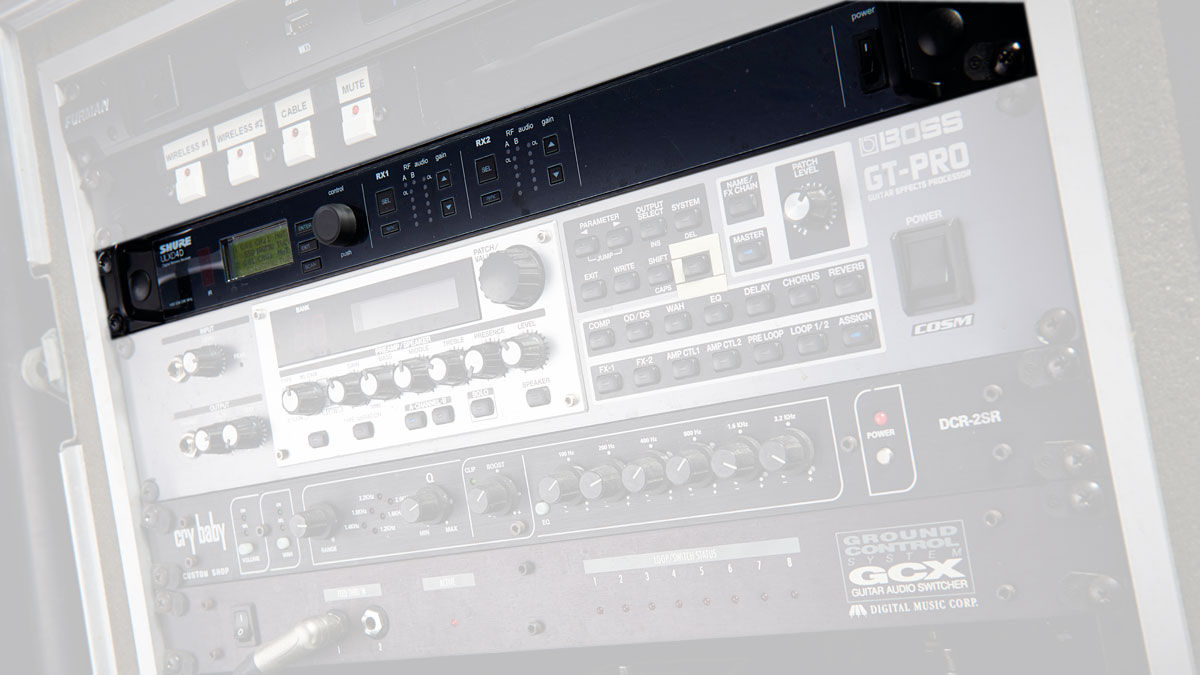
Shure ULXD4D Wireless
Mick: “My unit was at least 10 years old and I figured it’s like cell phones, if you have a 10-year-old cell phone you should probably get a new one.
“I’m sure they’ve done some upgrades in the way wireless works in the last 10 years. It’s been great. And the wireless units are well protected - they’re ribbed for my pleasure!”

Rivera KR-7 Heads
Mick: “These amps have three channels, with boosts on each one. The whole set is basically done in channel three, except for when I kick in some effects. Instead of having it through an [effects] loop I actually switch over into the clean channel instead. It’s still wired that way from the way I did forever ago.
Most high-gain amps really suffer on the clean side. But if anything, the cleans on this sound good to none
“This amp will do anything - even incredibly clean sounds with lots of lush reverb. Channel two is great; it’s very very dynamic. It’s not nearly as saturated or compressed as channel three, which is a lot more live and open. Then channel three is fully balls out.
“This amp covers a shit-ton of ground and I use it for one thing! Most high-gain amps really suffer on the clean side. But if anything, the cleans on this sound good to none. I love it at home, it’s a shame that I waste [the versatility] on the road!
“There’s also a knob on there - a mid mod. It allows me to fine-tune the midrange a little, so that might be something that’s integrated into the next version. We’re talking about different things now and once I get some time, I can actually go out to Rivera and spend time to work something out.”

Rivera Rockcrusher Recording Power Attenuator
Mick: “I’ve got an isolation cab with a 4x12 and a couple of mics on it. One signal is coming out of the head [and isolation cab], and one is coming out of this, which you can then fine tune to speaker emulate.
You can use it for home recording where you can crank up a tube head straight into it with no cab, direct into your computer and record
“It’s like blending amps in the studio, because I can make it sound like a totally different cabinet so whatever [the isolation cab] might be lacking you can fill in some of the gaps and add a little sparkle on the fly if the room’s a little dull in the afternoon during soundcheck.
“Kevin can pop a couple of the [11-band EQ parameters] up a little and there you go, sweetened up. You can tune it to the room. You can use it for home recording where you can crank up a tube head straight into it with no cab, direct into your computer and record. Especially if you live somewhere where you don’t have the luxury of turning up so loud with a cab that the windows are blowing out.”
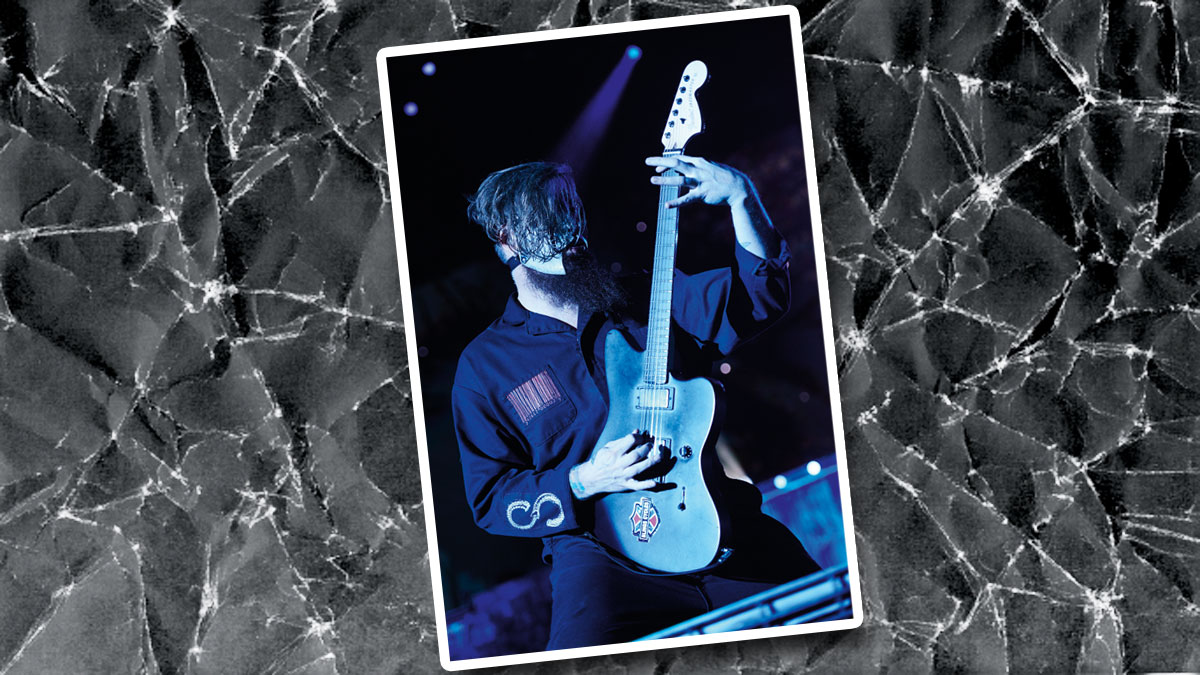
Fender Jim Root Jazzmaster
Jim Root: “The Jazzmasters are literally my straight signature models. They’re what you could go and buy at a guitar shop.
I think the lighter the guitar, the more it can vibrate, the tonier it sounds
“I don’t really have to think about my guitars much anymore because I love what I’ve done with Fender so much, and if I’m ever out and I need a guitar and they have one of my signature models for sale in a guitar shop I can go out and just play that!
“I think the lighter the guitar, the more it can vibrate, the tonier it sounds. That’s why when I get my signature models that are straight production models I ask them to go through all the ones they have and send me the lightest ones. But the Jazzmasters weigh a lot with all that mahogany. Pretty thick, heavy guitars.”

V-Man Warmoth Guitar
Jim Root: “V-Man, our bass player, he made that for me. It’s a Warmoth. It’s a cool guitar so I’ve been playing it live. It’s alder or basswood with a quilt maple top. It’s got the David Gilmour single coil and an [EMG] 81 in it.
“Then V-Man did all the fretwork and all that stuff. I’ve been using it for the last three songs in the set, which is Surfacing, Left Behind and Spit It Out. He gave it to me at the beginning of the tour, right before we left. He was like, ‘Hey I got you a Christmas present and he sent me a picture of it.’ I was like, ‘Hey cool! I got you… nothing!’ [laughs]”
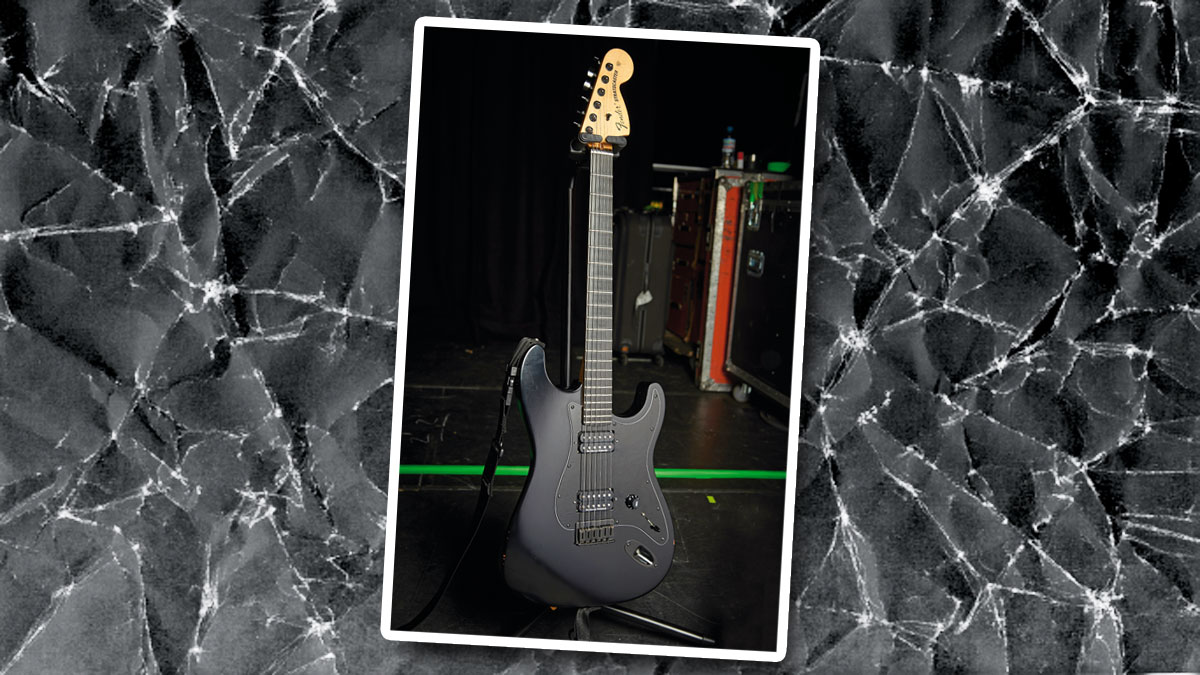
Fender Jim Root Strat (for pickup testing)
Jim Root: “I have been working with EMG and they sent me a bunch of pickups, and in this Strat I play for the middle of the set Martin [Jim’s tech] has been switching the pickups out every night and I’ve been trying different ones to try and do different things with them.
What I would really like to do is try to see if EMG can make a passive pickup that feels and sounds like the 81 and the 60
“What I would really like to do is try to see if EMG can make a passive pickup that feels and sounds like the 81 and the 60. But the problem I’m having, once I play a certain pickup in that guitar, no matter what it is, I go back to what I’m used to and I love it.
“There’s nothing that I would really want to change about the 81 and the 60. I love the 60 for clean, when we’re doing songs like Devil In I and Dead Memories, I also flip up the neck pickup for all the clean stuff. It’s really bubbly, and thick and round. With signature pickups, they want to do it and I want to do it but I don’t want to put my name on something that already exists.
“It’s much the same thing with Orange. Unless I really change something and put my stamp on it, I can’t justify making it a signature anything. Because what are you doing it for at that point?”
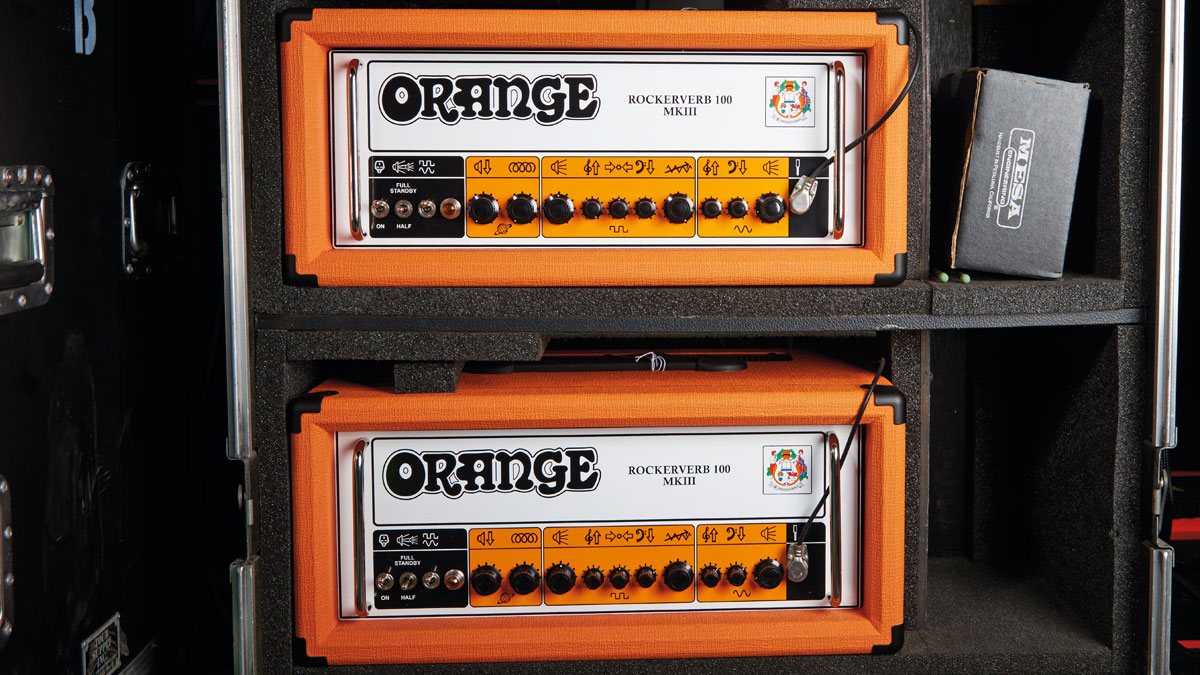
Orange Rockerverb MKIII
Jim Root: “Every time I play an amp that I think I like a lot, I go back and I play my Orange and it’s, ‘Oh yeah there’s my sound!’ It’s a really good balance too.
“Part of it is compromise, part of it is working with our front of house engineer to find balances between things. If I was to have the exact same tone as Mick it just wouldn’t sound as wide and full and thick out front.
What I like about the Oranges is they’ve got a nice chunk with the lows happening but they have this midrange that’s very sweet
“They’re like a perfect cross between the original one and the MKII. The clean channel is amazing and I love the picture graphics because it’s that classic thing that I love so much.
“What I like about the Oranges is they’ve got a nice chunk with the lows happening but they have this midrange that’s very sweet but very aggressive too. It cuts through really nice, especially in this band.
“There’s so much going on with this band; we’ve got three drummers, a DJ… all that stuff that in order to have your sound cut through, you can’t be masking frequencies with all these bass frequencies because it just gets lost in the mix. Essentially then it’s just straight into those with the pedalboard…”
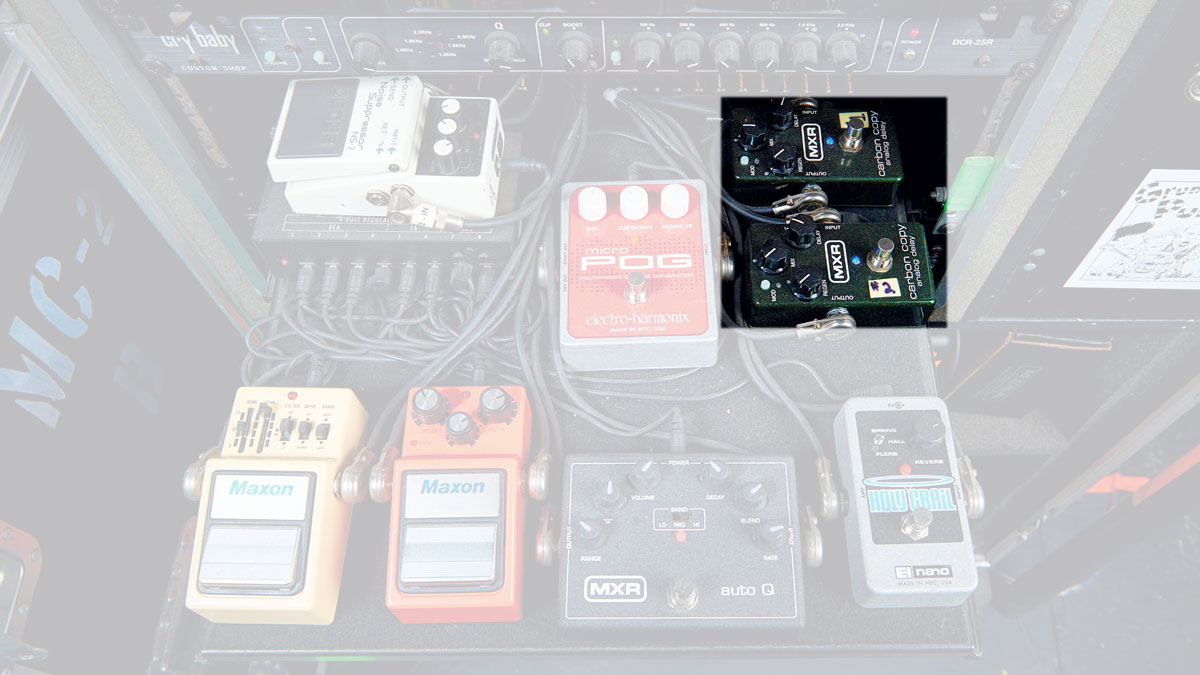
MXR Carbon Copy Delays
Jim Root: “I have one set up for the clean channel and one set up for the dirty channel. The one on the clean channel has a quicker slap on it. You can’t really hear it, it’s just adding a little bit of warmth.
“The one on the dirty channel is for really crazy solos and have a really long trail on the end of them. I had a couple of different delays but I just liked this one; it’s compact, it’s really cool if you want to mess around with the delay speed on it, to get it to recycle on itself. And it will do it every time and it’s not finicky, it’s very consistent.”
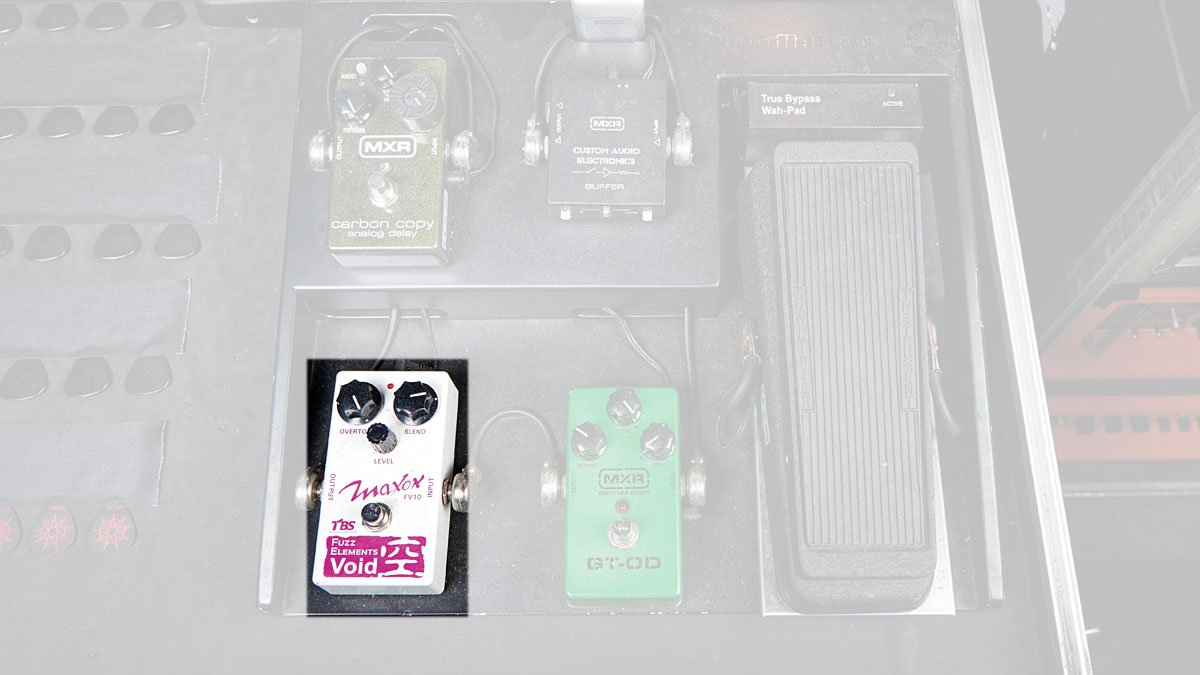
Maxon Fuzz Elements Void
Jim Root: “I’ve got a few different fuzz pedals that I own, and I use them in Eyeless in the middle section [Jim hums the doomy riff] and songs like Iowa, and also, if I remember correctly, certain sections of The Negative One, too.
“If Mick drops out and does something high on the strings, I’ll click that on to widen the band and give it something dirtier to go with the bass and kind of fill up the sound.”
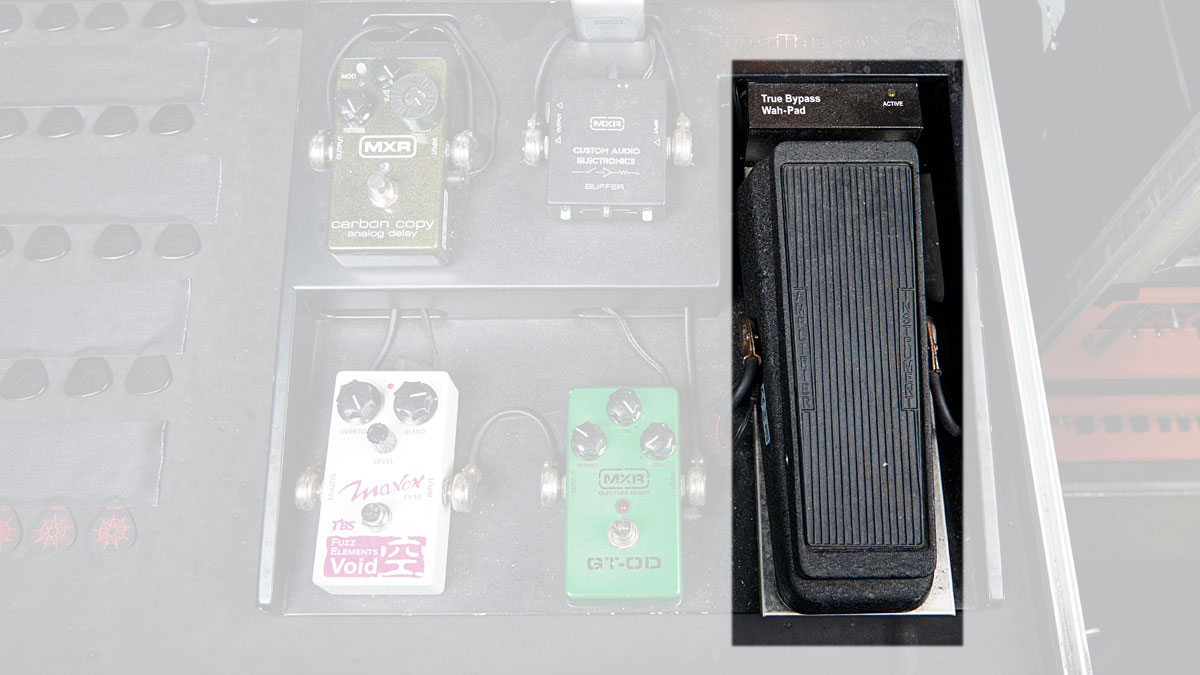
Dunlop JH-1D Jimi Hendrix Signature Wah
Jim Root: “I tend to use it in fixed positions and then I’ve got the hotplate switch, so I’ll just put my toe or the side of my shoe on that to activate it. If I’m doing a solo and I want some wah, I’ll use this one.”
Don't Miss
Slipknot's Jim Root: my top 5 tips for guitarists
Slipknot talk new album, Paul Gray and overhauling their tones
Metal roundtable: Slipknot vs Korn
Slipknot's Jay Weinberg on following Jordison, The Gray Chapter, that mask and more
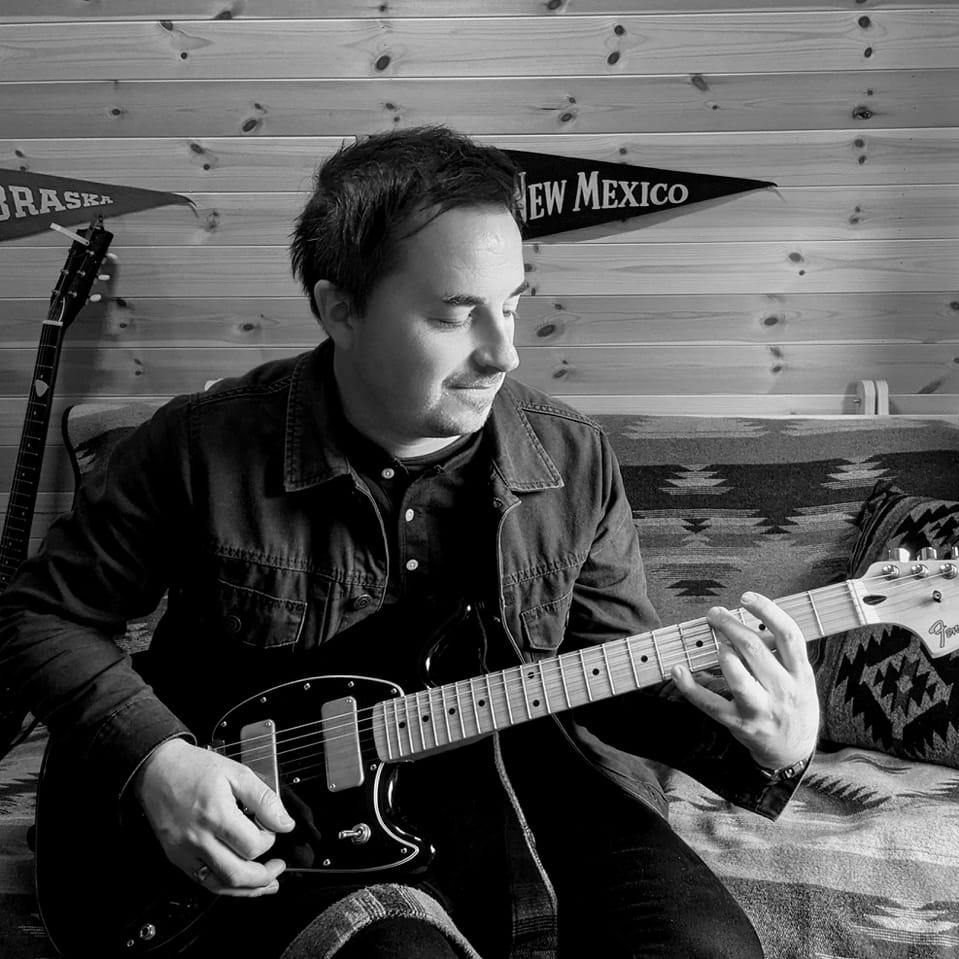
Rob is the Reviews Editor for GuitarWorld.com and MusicRadar guitars, so spends most of his waking hours (and beyond) thinking about and trying the latest gear while making sure our reviews team is giving you thorough and honest tests of it. He's worked for guitar mags and sites as a writer and editor for nearly 20 years but still winces at the thought of restringing anything with a Floyd Rose.
